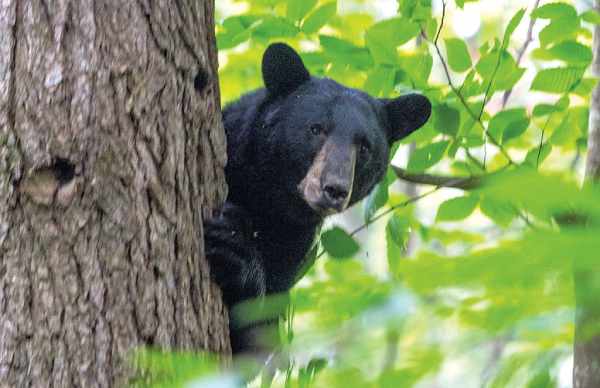Vermont is a beautiful state located in the New England region of the United States. Although it is small in size, Vermont is packed with natural beauty, including 4 million acres of forest and 75% of the state being rural. The dairy farms that dot the landscape add to the picturesque scenery, and the abundant wildlife and wide variety of plant life make Vermont a nature lover’s paradise.
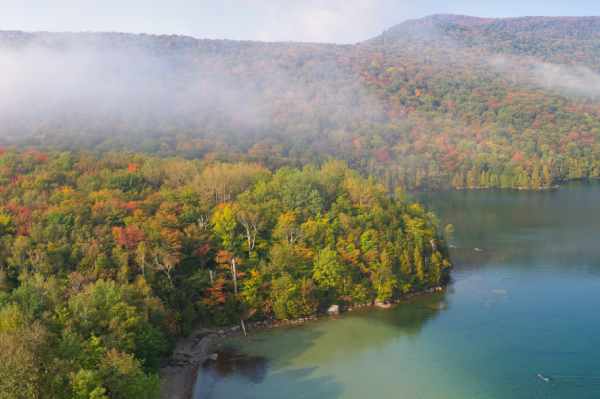
Many migratory birds stop over in Vermont, and the state is also home to hundreds of permanent bird species. There are foxes, bobcats, muskrats, black bears, and raccoons among other forest animals in Vermont. Vermont is also the home of rodents, rabbits, and opossums. Toads and frogs are also everywhere, and you can hear them singing the popular spring chorus which means warmer weather is coming.
Wild animals can be seen in each season and in every corner of the state. If you want to see moose, you have to go to wetlands and bogs in the fall, which is when they mate. However, this list contains only a small number of animals in Vermont.
Table of Contents
Wood Duck
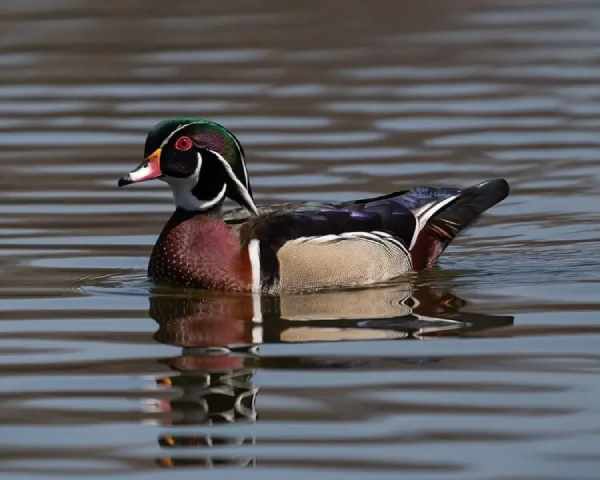
Wood Ducks are one of the most colorful species of ducks in North America. They are found in the Rocky Mountains and Taiga of Canada in the south region. Wood Ducks lay their eggs in natural holes or holes created by humans where they can find enough food to stay alive like acorns, water plants, shallow waters, etc.
They are also one of the most widespread, living in human-made ponds, beaver ponds, marshes, river stretches, swamps, and ponds. Wood Ducks don’t have to build their nests close to water. It doesn’t matter how far away the nest is from the water. Wood Ducks start moving to the Vermont area at the end of March, and their migration is at its peak in April.
Wood Ducks mate in the winter, and their pairs are created during this season. Mating starts on the water, and the male Wood Duck will raise his chest and head high to attract a female Wood Duck. He will then start rotating in a circle around the female duck he has chosen for mating. The nesting tree for a Wood Duck is typically 16 inches in cavity diameter, and the cavity entrance diameter is around 3-5 inches. The Wood Duck can happily live in nests made by humans, as long as the nest meets these basic requirements.
The females can lay between 10 and 15 eggs per clutch, and they generally lay one egg per day until their clutch is complete. Wood duck eggs are off-white in color and have a glossy sheen to them during the incubation period, which lasts for 28-37 days on average. Baby wood ducks are born with sharp nails that help them climb out of the nest, and they leave the nest within 24 hours of birth. Their mother quickly leads them down to the water, where they will learn to swim and forage for food.
Where can one find Wood Duck in Vermont?
They are a type of duck that lives in the North American area. Typically, you may find them in the southern portion of Canada, close to the Rocky Mountains and the Taiga. They arrive in Vermont in March (at the end of March month). It is possible to see these animals in Vermont during the months of March and April when their migration is at its peak.
Great Blue Heron
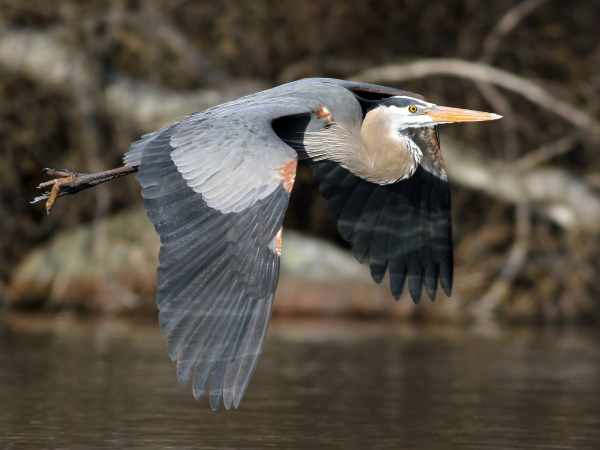
Great Blue Herons are one of the many animals that can be found in Vermont. These majestic birds are mostly found near coastal areas, and their numbers tend to increase during the winter months. Great Blue Herons typically stay near the Atlantic coast, but some may start migrating to other areas based on changes in their environment and habitat.
Great Blue Herons usually start showing up in Vermont around the middle of March. Some of them migrate in November, while others move to the Missisquoi Nation Wildlife Range in December. Most of the time, this rare bird can be found in Vermont, but nests have been seen on Valcour Island in Lake Champlain. Great Blue Herons are usually shy, but you can see them when they are catching fish or sleeping in trees.
They are large birds that can be found near bodies of water. They tend to make their nests close to the ground or in trees near water sources. Great Blue Herons are tall birds with long necks. They are colored blue to grey and have long feathers around their necks, heads, and backs. Great Blue Herons move slowly in order to catch their prey which consists of reptiles, small mammals, birds, frogs, and fish.
Where can one find Great Blue Herons in Vermont?
They gather mostly on the Island’s western shore, close to Missisquoi National Wildlife Range. About 250–600 Great Blue Heron nests can be discovered in the area of this vast wetland around Lake Champlain.
American Red Squirrel
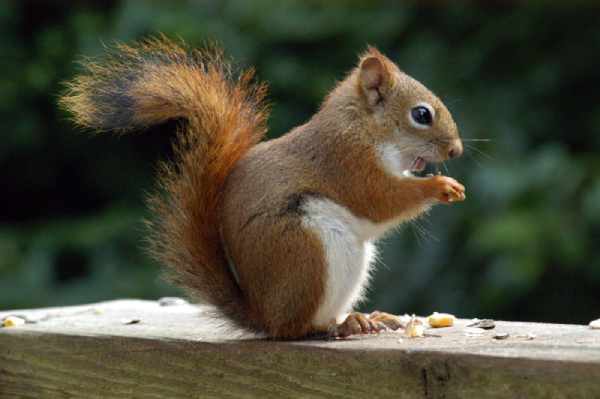
The American Red Squirrel is a small, reddish-brown squirrel that is found throughout much of the United States, including Vermont. These squirrels are relatively small, with an adult typically measuring 28-35.5 cm in length and weighing 200-250 grams. They have a relatively short life span compared to other animals, with a maximum life expectancy of around eight years. However, their mortality rate is quite high, with only 20 percent of baby squirrels typically surviving their first year of life. If they do manage to survive, they can live for up to 2.5 years.
Bobcats, lynxes, hawks coyotes, and owls are the most dangerous predators. They are red, and their bellies are white, which makes them easy to tell apart from other kinds of squirrels. In comparison to chipmunks, they are much larger, yet they are smaller than grey squirrels and fox squirrels. They are also called red squirrels in North America, chickarees, pine squirrels, and often Hudson’s Bay squirrels.
They mostly eat cone seeds and are easy to find in places where conifer corns are widespread or readily available. Although they are related to the American red squirrel, you won’t find them in the Pacific Northwest. Hardwood rainforests are another common place they can be found.
American red squirrels are easily recognizable due to their smaller size. These animals primarily eat grains in the wild, but they will also consume other food items like leaves, bearberry, mushrooms, catkins, snowshoe hare, and buds. The American red squirrel relies on a diet that includes several different types of mushrooms to be healthy.
One of the most notable features of the red squirrel is its reproduction process. Unlike many other animals, female red squirrels do not have a regular estrous cycle. Instead, they experience a sudden ovulation process in which multiple eggs are released at once. This often results in multiple males trying to mate with the female during the breeding season. While a typical litter size is only one or two babies, a female red squirrel can produce up to 16 offspring in a single year. This high reproductive rate helps to offset the high mortality rate of young red squirrels, which are often preyed upon by birds and other predators.
At birth, they are Pink in color, hairless, and weighing just about 10 grams. Baby squirrels are easily recognizable. During the fall, they mature in around 125 days after hatching, growing to a full 1.8 grams in weight per day. Mothers have a total of about 70 days to raise their young once they are born in the nest, which is where they spend their complete lives.
Nests are built on trees using grass and are not placed at the top of the trees. This is because parents can more easily gather food and defend their young from predators. Studies show that the female red squirrel population is growing faster than the male population.
Where can one find American Red Squirrel in Vermont?
They are widespread throughout the state of Vermont. Their natural habitat is the area east of Georgia, specifically the coasts of the North Atlantic and Pacific, and the Rocky Mountains. You’re more likely to spot one during the summer months, as they hibernate for the colder months and hoard food.
Eastern Chipmunk
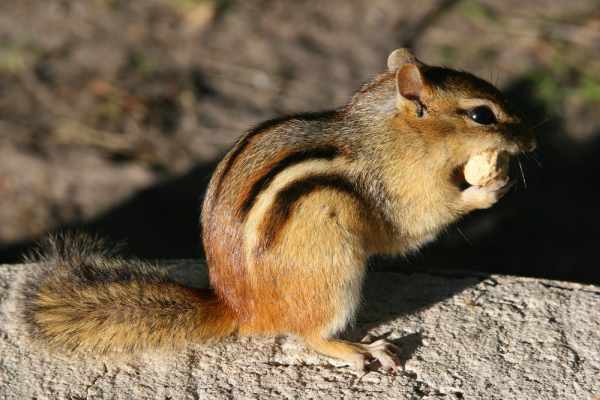
Chipmunks are small rodents that live on the ground. They live in North America. Their eyes and ears are big, their tails are hairy, and their nails are thin. Chipmunks are basically small squirrels that take advantage of what’s on the ground and in the rocks. They paddle on land, but they also know how to climb mountains.
As a group, they are a species that makes the environment change. The length of a chipmunk’s body ranges from 8 to 16 cm, and the length of its tail ranges from 6 to 14 cm. All of them only work during the day, and all but one of them are in North America, from the south of Canada to the center of Mexico in the west.
There are several different varieties, and they can all be discovered over sea level, at roughly 12800 feet, along with cliffs, boulders, and large rocks. They can be found in a wide range of ecosystems, from timberline slopes and alpine rivers along rocky slopes to deforested woods and sagebrush deserts.
The eastern chipmunk lives in North America’s deciduous forests. It has a body length of 14–19 centimeters and a weight of 70–142 grams. The short tail of an eastern chipmunk varies between 8 and 11 cm. Reddish brown in color, the eastern chipmunk’s hair is actually five strands of darker brown that stretch the length of its body.
The eastern chipmunk is the largest member of the chipmunk family, but there are other members of this family that are found in other parts of North America. For example, the Hopi chipmunk is found in the Southwest United States and is much smaller than the eastern chipmunk. The Hopi chipmunk can also climb rock surfaces
Species of chipmunks known as Uintas are found in the western United States’ mountain forests. They act similarly to tree squirrels and build their nests in trees, where they spend the night. They also populate abandoned bird nests and other underground roosts. The White Sea is in northwest Russia to the east across Siberia to northern Japan and south to China, and this is the only species of Old-World chipmunk found in all of these areas.
Where can one find Eastern Chipmunk in Vermont?
The eastern chipmunk serves several purposes and can be found in different locations. Their primary habitats are wooded environments, particularly lush woods, forest margins, and dense underbrush. They are also common along fences and in meadows and pastures. They eat a variety of things, including birds, plants, and nut trees. Suitable habitat for chipmunks will provide them with ample food, cover, and caves. Obtaining official status as Vermont animals.
In most cases, chipmunks don’t have a problem finding suitable cave sites because they may simply dig down to them or make use of holes already present in dead trees, logs, and stone walls. Both the basement and the structures will be put to use. Typically more than ten feet long and three feet deep, a chipmunk’s elaborate pit system includes a network of tunnels, storage rooms, and food preparation areas. There are often two tiers in the pits. The chipmunk sleeps on the top level, which is covered in grass and leaves. Food is stored in the lower levels.
Milk Snake
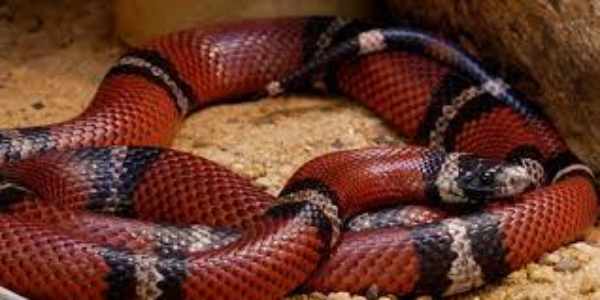
Milk snakes are beautiful, non-venomous snakes that mimic the appearance of poisonous snakes to deter predators. They come in a wide variety of colors and patterns, making them a popular choice for snake enthusiasts.
Although they are not currently endangered, milk snakes are only found in certain parts of the world. There are 24 different species of milk snake, found in North America, Central America, and parts of southeastern Canada. Milk snakes live an average of 22 years in captivity, although their lifespan in the wild is much shorter.
There is a slight possibility that dairy snakes exist in the western hemisphere. The dairy snake has adapted well to a wide range of habitats. It is common for snakes to be found in the wild, and some species will even migrate to more open areas in search of prey. They can sleep in dry places, live in caves, or construct homes on steep slopes. During the warmer months, these snakes seek out places with plenty of water to drink.
Where can one find milk snakes in Vermont?
In Vermont, you can find these animals in forests, on ledges, and on rock slides.
Long Tailed Weasel
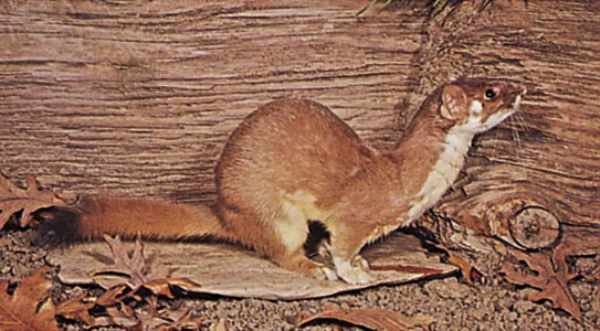
Long Tailed Weasels are found in various parts of North America, but they are less common in some areas such as the southwest region of the United States. Some of these areas include Nevada, Arizona, and California. These weasels typically live in wooded areas near water sources, but they can also be found in open spaces and on farms.
The legs of a Long Tailed Weasel are relatively short in comparison to the length of its body, neck, and beard. The tail has a black, pointed tip. The long-tailed weasel has fur all over its body, with darker brown fur on top and lighter yellow fur on the underside. In the far north of Vermont, especially, they change color and take on a dazzling white appearance. Southwest long-tailed weasels are distinguished by a distinctive white facial mark. Getting itself included in the ranking of animals in Vermont.
Long Tailed Weasels are carnivorous animals with a high metabolism. This allows them to eat up to 40 percent of their body weight each day. In addition to their high metabolism, Long Tailed Weasels also have a unique fur pattern that helps to camouflage them from predators and prey alike.
It kills its prey by crushing the skull and then follows the scent or the sound to find it. Due to its elongated shape, it can efficiently dig holes. Their mating season begins in the summer, and the development phase of the eggs begins after 27 days of gestation, which is before the baby is born. In the spring, female weasels give birth to their young.
During the breeding season, 4–8 weasel babies are born on average each year. The newborn weasel is born completely blind and with very fine hair. They don’t open their eyes until they’re 36 days old. The mother gets food for these young long-tailed weasels. When they reach 7–8 weeks old, they leave their mother and start looking for food on their own.
Long-tailed weasels are mostly active at night, but they can also be seen during the day. They are good swimmers and climbers, and they often make their homes in holes left by other animals such as rocks, decaying logs, and the roots of trees. Long-tailed weasels typically build their nests with leaves and grass. These creatures are very playful and have a high metabolism, meaning that they need to eat frequently. Because of this, long-tailed weasels often hunt for food several times each day.
Where can one find Long Tailed Weasel in Vermont?
Long-tailed weasels can be found all over Vermont, but they are most common in wooded areas and places where fields and forests meet.
FAQs
What animal is Vermont known for?
The Morgan horse (Equus cabullus morganensis)
What kind of animals does Vermont have?
Vermont has wolves, rabbits, moose, beavers, ducks, gophers, and mice. Many migrating birds make Vermont their home. Vermont is home to bears, foxes, raccoons, bobcats, and muskrats.
What big cats live in Vermont?
The eastern bobcat (Lynx rufus rufus) and the Canada lynx (Lynx canadensis Canadensis). are the two “wildcats” that can be found in Vermont
What large animals live in Vermont?
Wolves, mountain lions, bobcats, foxes, and black bears are just a few of the many predators that have helped Vermont’s wildlife flourish.
Does Vermont have grizzly bears?
To put it simply, the black bear (Ursus americanus) is the smallest of the three bear species native to North America. Vermont is home to only one species of bear.
Summary of Animals in Vermont
Vermont is home to a wide variety of wildlife, making it an ideal destination for nature lovers and animal lovers alike. In every season and in every part of the state, there are opportunities to see wild animals in their natural habitat. Moose are particularly popular animals to spot, and autumn is the best time to see them as it is their mating season. Wetlands and bogs are great places to look for moose, as well as other animals such as wolves, rabbits, beavers, ducks, gophers, and mice.
Vermont is also home to hundreds of bird species, including many migratory birds. For those interested in forest mammals, Vermont has plenty to offer, including bobcats, muskrats, foxes, raccoons, and black bears. Opossums, rabbits, and rodents are also native to Vermont, and toads and frogs are abundant throughout the state. In springtime, the chorus of singing frogs can be heard throughout Vermont, signalling the start of warmer weather.

Zahra Makda
Growing up enjoying the beauty of my village, a good passion for nature developed in me from childhood. Following my passion for the natural world, I have chosen zoology for my graduation, during my undergraduate degree, I participated in many nature trails, bird watching, rescues, training for wildlife conservation, workshop, and seminars on biodiversity. I have a keen interest in invertebrate biology, herpetology, and ornithology. Primary interests include studies on taxonomy, ecology, habitat and behavior.

